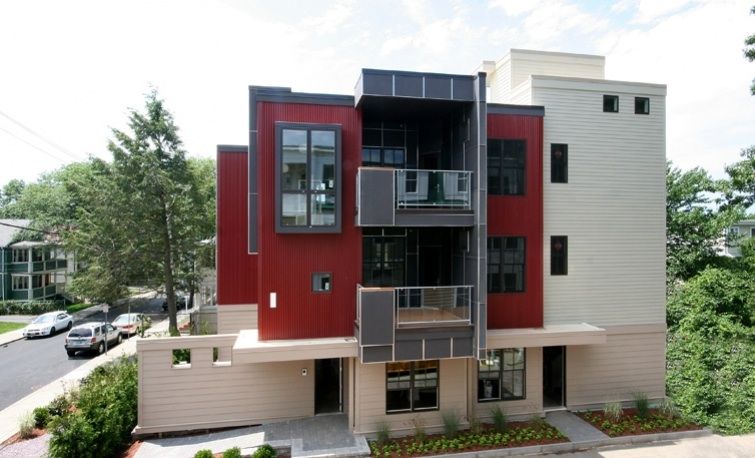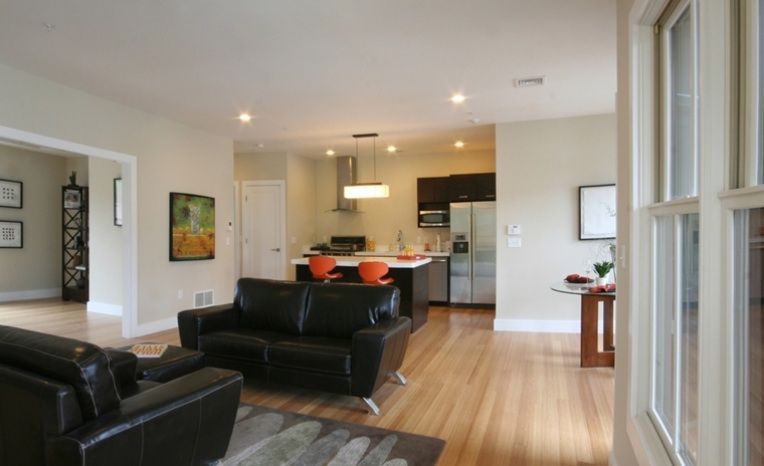
An article published in March on the housingzone.com website offered perspectives on the home-buying preferences of children of Baby Boomers. The timing of the story is appropriate, particularly because some of these Boomer offspring, otherwise known as Millennials, or Gen Y, are now nearing that age when buying a home segues from distant possibility to compelling consideration.
One notable casualty of the Millennials’ emergence is the living room, which has been disappearing from floor plans in favor of open designs that meld kitchen, dining, and living areas into a common space that can be divided up, as needed, with moveable partitions. Also fading from the wish list: the bathtub. Showers are fine.
Not big, but with the right features
The article points out that in general buyers will expect the building to be energy efficient and easy to maintain, even if it isn’t spacious. In fact, some of the most expensive properties mentioned in the story – single-family homes, priced the $800,000s and $900,000s, in Sonoma at Woodbury, a village in California’s Irvine Ranch master-planned community – a relatively modest 2,785 sq. ft. of conditioned space. The rest of the properties cited are well under 2,200 sq. ft, with most in the neighborhood of 1,700 sq. ft.
The mind-set of these buyers is not “buy, sell, move up.” They’re attuned to the reality of slow price appreciation, and they’re looking for good quality – including a community with shopping and transit within walking distance, and a good school district – from the get-go.
“Millennials with families recognize that their move-up purchases will be limited by slowly increasing equity growth,” Jerry Gloss, co-principal of KGA Studio Architects in Louisville, Colorado, told housingzone.com. “They want an enduring investment.”
Fine Homebuilding Recommended Products
Fine Homebuilding receives a commission for items purchased through links on this site, including Amazon Associates and other affiliate advertising programs.

Affordable IR Camera

8067 All-Weather Flashing Tape

Handy Heat Gun
























View Comments
Some years ago, I was unhappy with the way every radio station I liked seemed to be changing its' format just a bit, to my displeasure. I was lucky enough then to have a very nice chat with the program director of one of the big stations in one of the country's largest markets. He explained this thing called 'demographics' to me, and by that light his decisions made perfect sense. I owe him a very big thank-you.
Such is the situation with housing. With our population now growing -at best- modestly, and a near static population being actively sought by some, housing construction MUST be one of the areas most greatly affected.
Simply put .... once there's a house for everyone, where do we go from there?
Well, looking at demographics, the first trend will be towards making homes more suitable for an older population. More 'semi-apartments,' more home offices, more rooms designed for specific leisure activities, more 'luxury' items such as elevators.
The next step is the replacement of old, worn housing with new. Expect the replacement homes to have fewer stairs, wider doorways, greater privacy, and far greater security.
With the loss of massive tract developments, there can't help but be a change in the way construction firms operate. Each job will stand on its' own. Each site will have to be self-contained as never before ... with noise, trash, dust, even crew toilet facilities segregated from the occupied house.
Another approach that will gain in use is what I call the "Mike Holmes method." Put the occupants in a hotel, put their stuff in containers, work around the clock, then put it all back together- in record time. If nothing else, this means that the furniture movers will become another subcontractor to the job. GC's might even get into the hotel business!